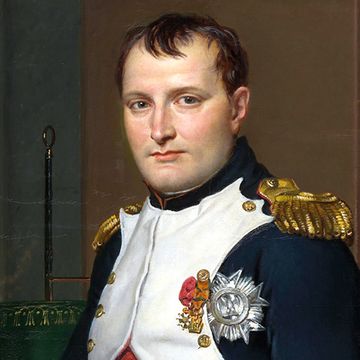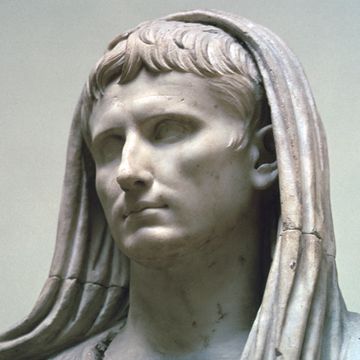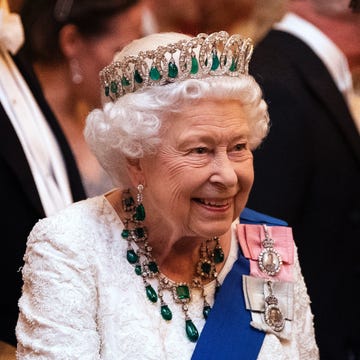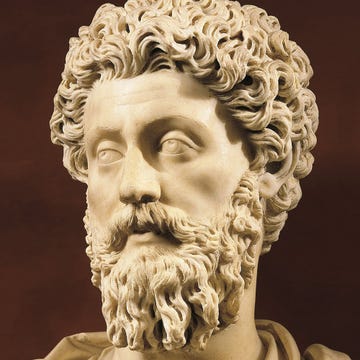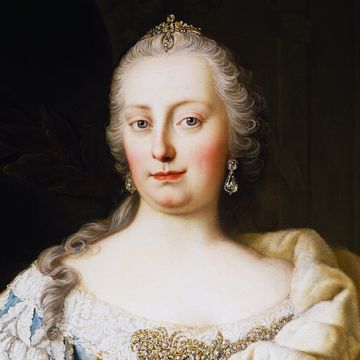356-323 BCE
Who Was Alexander the Great?
Alexander the Great became king of Macedonia, the ancient Greek realm, around age 20 and subsequently expanded his empire to parts of modern-day Greece and the Middle East. During his reign, from 336 to 323 BCE, he united the Greek city-states and led the Corinthian League. He also became the king of Persia, Babylon, and Asia, and created Macedonian colonies in the region. While considering the conquests of Carthage and Rome, Alexander died of malaria in Babylon (now Iraq), in June 323 BCE at age 32.
Quick Facts
FULL NAME: Alexander III of Macedon
BORN: July 20, 356 BCE
DIED: June 13, 323 BCE
BIRTHPLACE: Pella, Macedonia (now Greece)
SPOUSES: Roxana (327-323 BCE) and Stateira (c. 333-323 BCE)
CHILDREN: Alexander IV
ASTROLOGICAL SIGN: Cancer
When Was Alexander the Great Born?
Alexander the Great, or Alexander III of Macedon, was born on July 20, 356 BCE, in Pella. The capital city of the Ancient Greek kingdom of Macedonia, Pella is in northern part of modern-day Greece. His parents were King Philip II of Macedon and Queen Olympia, daughter of King Neoptolemus.
The young prince and his sister were raised in Pella’s royal court. Growing up, the dark-eyed and curly-headed Alexander hardly ever saw his father, who spent most of his time engaged in military campaigns and extramarital affairs. Although Olympia served as a powerful role model for the boy, Alexander grew to resent his father’s absence and philandering.
Alexander received his earliest education under the tutelage of his stern relative Leonidas of Epirus. Leonidas, who King Phillip hired to teach Alexander math, horsemanship, and archery, struggled to control his rebellious student. Alexander’s next tutor was Lysimachus, who used role-playing to capture the restless boy’s attention. Alexander particularly delighted in impersonating the warrior Achilles.
In 343, King Philip II hired the philosopher Aristotle to tutor Alexander at the Temple of the Nymphs at Meiza. Over the course of three years, Aristotle taught Alexander and a handful of his friends philosophy, poetry, drama, science, and politics. Seeing that Homer’s Iliad inspired Alexander to dream of becoming a heroic warrior, Aristotle created an abridged version of the tome for Alexander to carry with him on military campaigns.
Becoming King of Macedonia
In 339, while still just a teen, Alexander became a soldier and embarked on his first military expedition, against the Thracian tribes. In 338, Alexander took charge of the Companion Cavalry and aided his father in defeating the Athenian and Theban armies at Chaeronea. Once Philip II had succeeded in his campaign to unite all the Greek states (minus Sparta) into the Corinthian League, the alliance between father and son soon disintegrated. Philip married Cleopatra Eurydice, niece of General Attalus, and ousted Alexander’s mother. Alexander and Olympia were forced to flee Macedonia and stay with Olympia’s family in Epirus until Alexander and King Philip II were able to reconcile their differences.
In 336, Alexander’s sister wed the Molossian king, an uncle who was also called Alexander. During the festival that followed, King Philip II was murdered at the hands of Pausanias, a Macedonian noble and one of the king’s bodyguards.
In the wake of his father’s death, Alexander, then around age 20, was determined to seize the throne by any means necessary. He quickly garnered the support of the Macedonian army, including the general and troops he had fought with at Chaeronea. The army proclaimed Alexander the feudal king and proceeded to help him murder other potential heirs to the throne. Ever a loyal mother, Olympia further ensured her son’s claim to the throne by slaughtering the daughter King Philip II had with Cleopatra and driving Cleopatra, herself, to suicide.
Even though Alexander was the feudal king of Macedonia, he didn’t obtain automatic control of the Corinthian League. In fact, the southern states of Greece were celebrating Philip II’s death and expressed divided interests. Athens had its own agenda: Under the leadership of democratic Demosthenes, the state hoped to take charge of the league.
As they launched independence movements, Alexander sent his army south and coerced the region of Thessaly into acknowledging him as the leader of the Corinthian League. Then during a meeting of league members at Thermopylae, Alexander elicited their acceptance of his leadership. By the fall of 336, he reissued treaties with the Greek city-states that belonged to the Corinthian League, with Athens still refusing membership, and was granted full military power in the campaign against the Persian Empire. But before preparing for war with Persia, Alexander first conquered the Thracian Triballians in 335, securing Macedonia’s northern borders.
Empire
As Alexander was nearing the end of his northern campaign, he was delivered the news that Thebes, a Greek city-state, had forced out the Macedonian troops that were garrisoned there. Fearing a revolt among the other city-states, Alexander leapt into action, marching his massive army—consisting of 3,000 cavalry and 30,000 infantry—southward all the way to the tip of the Greek peninsula. Meanwhile, Alexander’s general Parmenion had already made his way to Asia Minor.
Alexander and his forces arrived in Thebes so quickly that the city-state didn’t have a chance to pull together allies for its defense. Three days after his arrival, Alexander led the massacre of Thebes. It was Alexander’s hope that the destruction of Thebes would serve as a warning to city-states contemplating revolt. His intimidation tactic proved effective; the other Greek city-states, including Athens, chose to pledge their alliance to the Macedonian Empire or opted to remain neutral.
Persian Campaign
In 334, Alexander embarked on his Asiatic expedition, arriving in Troy that spring. Alexander then faced Persian King Darius III’s army near the Grancius River; Darius’ forces were swiftly defeated. By fall, Alexander and his army had made it across the southern coast of Asia Minor to Gordium, where they took the winter to rest. In the summer of 333, the troops of Alexander and Darius once again went head to head in battle at Issus. Although Alexander’s army was outnumbered, he used his flair for military strategy to create formations that defeated the Persians again and caused Darius to flee. In November of 333, Alexander declared himself the king of Persia after capturing Darius and making him a fugitive.
Conquering Egypt
Next up on Alexander’s agenda was his campaign to conquer Egypt. After besieging Gaza on his way there, Alexander easily achieved his conquest; Egypt fell without resistance. In 331, he created the city of Alexandria, designed as a hub for Greek culture and commerce. Later that year, Alexander defeated the Persians at the Battle of Gaugamela. With the collapse of the Persian army, Alexander became King of Babylon, King of Asia, King of the Four Quarters of the World.
Alexander’s next conquest was eastern Iran, where he created Macedonian colonies and, in 327 seized the fortress in Ariamazes. After capturing Prince Oxyartes, Alexander married the prince’s daughter, Roxana.
Venturing to India and the Persian Gulf
In 328, Alexander defeated King Porus’ armies in northern India. Finding himself impressed by Porus, Alexander reinstated him as king and won his loyalty and forgiveness. Alexander forged eastward to the Ganges but headed back when his armies refused to advance any farther. On their way back along the Indus, Alexander was wounded by Malli warriors.
In 325, after Alexander had recovered, he and his army headed north along the rugged Persian Gulf, where many fell prey to illness, injury, and death. In February 324, he reached the city of Susa at last.
Desperate to retain his leadership and recruit more soldiers, Alexander tried to connect Persian nobles to Macedonians in an attempt to create a ruling class. To this end, he commanded that a large number of Macedonians in Susa to marry Persian princesses.
After Alexander managed to recruit tens of thousands of Persian soldiers into his army, he dismissed many of his existing Macedonian soldiers. This enraged the soldiers, who spoke critically of Alexander’s new troops and condemned him for adopting Persian customs and manners. Alexander appeased the Macedonian soldiers by killing 13 Persian military leaders. The Thanksgiving Feast at Susa, which had been geared toward solidifying the bond between Persians and Macedonians, shaped up to be quite the opposite.
How Did Alexander the Great Die?
While considering the conquests of Carthage and Rome, Alexander the Great died of malaria in Babylon, Persia (now Iraq), on June 13, 323 BCE. He was 32 years old. Rhoxana gave birth to his son, Alexander IV, a few months later.
After Alexander the Great died, his empire collapsed, and the nations within it battled for power. Over time, the cultures of Greece and the Orient synthesized and thrived as a side effect of Alexander’s empire, becoming part of his legacy and spreading the spirit of Panhellenism.
Quotes
- Remember upon the conduct of each depends the fate of all.
- I am not afraid of an army of lions led by a sheep; I am afraid of an army of sheep led by a lion.
- I had rather excel others in the knowledge of what is excellent, than in the extent of my power and dominion.
- There is nothing impossible to him who will try.
- How great are the dangers I face to win a good name in Athens.
- I am dying from the treatment of too many physicians.
- Heaven cannot brook two suns, nor earth two masters.
Fact Check: We strive for accuracy and fairness. If you see something that doesn’t look right, contact us!
The Biography.com staff is a team of people-obsessed and news-hungry editors with decades of collective experience. We have worked as daily newspaper reporters, major national magazine editors, and as editors-in-chief of regional media publications. Among our ranks are book authors and award-winning journalists. Our staff also works with freelance writers, researchers, and other contributors to produce the smart, compelling profiles and articles you see on our site. To meet the team, visit our About Us page: https://www.biography.com/about/a43602329/about-us








